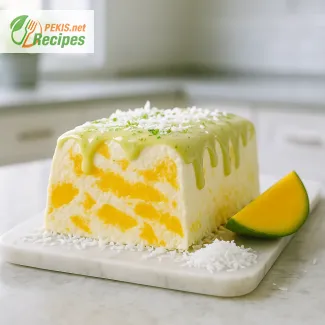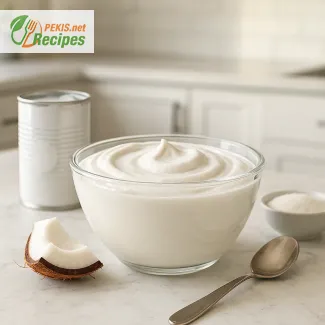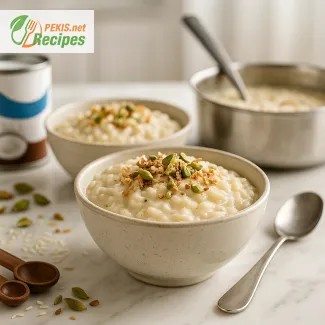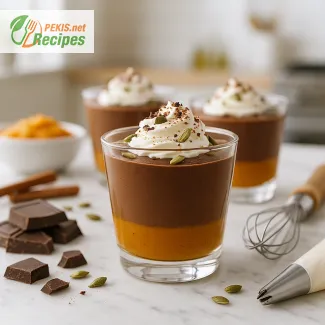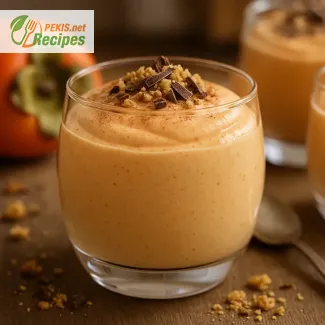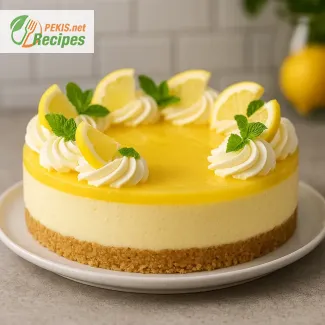
Irresistibly Creamy Lemon Cheesecake Without Baking
A refreshing dessert that melts in your mouth on hot summer days
When the heat of summer settles in and turning on the oven feels like a chore, there's nothing more satisfying than a no-bake lemon cheesecake—a dessert that brings together the perfect balance of creamy richness, citrus tang, and buttery smoothness. This cake isn’t just a dessert—it’s an experience. A light, luscious texture combined with the invigorating brightness of fresh lemon makes it a go-to for any warm-weather gathering. Whether you’re hosting a garden party, preparing a casual family treat, or just craving something cool and decadent, this cheesecake delivers elegance without the effort.
Why no-bake cheesecakes are the ultimate warm-weather indulgence
Unlike traditional baked cheesecakes that require precise oven timing and long cooling periods, no-bake cheesecakes are incredibly simple to prepare. They eliminate the risk of overbaking or cracking and instead offer a silky, mousse-like texture that feels luxurious with every bite. The coolness of this dessert is particularly satisfying on hot summer days, making it a staple for everything from picnics to brunches. It also keeps your kitchen cool and your prep time short, making this dessert as practical as it is delicious.
The beauty of a lemon cheesecake lies in its bright, tangy flavor profile. Lemon is a naturally refreshing ingredient—it cuts through the richness of the cream cheese and heavy cream, adding a zesty note that lingers pleasantly on the palate. The addition of fresh lemon zest enhances the aromatic quality of the cheesecake, delivering a multi-dimensional citrus flavor that feels clean and vibrant. Paired with a golden graham cracker crust or buttery biscuit base, each forkful offers a pleasing contrast between the crumbly, crunchy foundation and the airy, smooth topping.
The magic of texture: from crust to filling
A successful no-bake lemon cheesecake starts with the crust. While graham crackers are a classic choice, digestive biscuits or even buttery shortbread cookies make excellent alternatives. The key is creating a crust that’s compact enough to hold its shape when sliced, but still light enough to complement the creamy filling. A pinch of lemon zest or a drop of vanilla in the base can add another layer of flavor that ties the entire dessert together.
Then comes the heart of the dessert—the filling. It’s crafted from rich cream cheese, smooth whipping cream, and a touch of powdered sugar to balance the tartness. A generous amount of fresh lemon juice gives the cake its signature brightness, while gelatin or agar-agar (depending on preference) ensures the structure holds without baking. The result is a cheesecake that’s firm enough to slice, yet melts in the mouth with the lightness of a cloud.
Visual appeal and serving ideas
The visual allure of this cheesecake makes it just as inviting as its taste. Its pale yellow hue, flecked with fine bits of zest, looks stunning against a white plate or glass dish. For presentation, it can be topped with lemon slices, candied peel, or even a thin layer of lemon curd for extra zing. Garnishes like whipped cream, mint leaves, or fresh berries not only add color but also introduce complementary flavors and textures.
When it comes to serving, this dessert is incredibly versatile. It can be made in a traditional springform pan, divided into elegant mini cheesecakes for individual servings, or even set in glass jars for a charming rustic presentation. The cheesecake sets beautifully in the fridge, and its flavor improves as it chills, making it perfect for preparing ahead of time.
Light, luxurious, and lemony—perfect for any occasion
Whether you're preparing for a summer celebration, a weekend barbecue, or just looking for a delightful way to end a meal, this no-bake lemon cheesecake is sure to impress. Its blend of cool creaminess and vibrant citrus speaks to a wide range of palates. It's a dessert that feels indulgent yet refreshingly light, making it ideal for both special occasions and casual enjoyment.
Coming up next: the full recipe, complete with step-by-step instructions, measurements in both metric and US units, preparation and chilling time, and tips to get the perfect texture every time.
1. Prepare the crust:
Crush the digestive biscuits finely using a food processor or by placing them in a sealed plastic bag and crushing with a rolling pin. Transfer the crumbs to a bowl, add melted butter and lemon zest. Mix well until all crumbs are coated with butter.
Press the mixture firmly into the bottom of a 20 cm (8 inch) springform pan, forming an even base layer. Place the pan in the refrigerator to chill while you prepare the filling.
2. Bloom the gelatin:
In a small bowl, mix the gelatin powder with cold water (or use agar-agar if vegetarian). Let it sit for about 5–10 minutes until fully bloomed. Once bloomed, gently heat the mixture in a microwave or over low heat until dissolved. Do not boil.
3. Make the cheesecake filling:
In a large bowl, beat the cream cheese with powdered sugar until smooth and creamy. Add fresh lemon juice, lemon zest, and mix again.
In a separate bowl, whip the heavy cream until stiff peaks form. Gently fold the whipped cream into the lemon-cream cheese mixture using a spatula to maintain airiness.
Once the gelatin is slightly cooled but still liquid, slowly pour it into the mixture while stirring constantly. Ensure the gelatin is evenly incorporated without creating lumps.
4. Assemble the cheesecake:
Pour the cheesecake filling over the chilled crust and smooth the top with a spatula. Tap the pan lightly to remove any air bubbles. Cover the cheesecake and refrigerate for at least 4 hours, or overnight, until fully set.
5. Decorate and serve:
Once set, optionally spread lemon curd on top for extra tang, and decorate with whipped cream, lemon slices, mint leaves, or fresh berries. Slice with a warm knife for clean cuts.
Creative Upgrades for the Perfect Lemon Cheesecake Without Baking
Expert tips to refine flavor, texture, and nutritional value
Mastering the art of the no-bake lemon cheesecake opens the door to countless possibilities for refinement and customization. While the base recipe offers an exquisite balance of creaminess and citrus brightness, even subtle tweaks can elevate this dessert to new levels. Whether you’re seeking more complex flavor profiles, a healthier version, or a showstopping presentation, there are numerous ways to improve the traditional method. Here, we explore thoughtful variations, common mistakes to avoid, ingredient substitutions, and the benefits of making this dish at home from scratch.
Ingredient upgrades for enhanced flavor
One of the easiest ways to add depth to your cheesecake is by enriching the lemon component. For instance, using Meyer lemons instead of standard lemons imparts a more floral, slightly sweeter citrus note, making the dessert less sharp and more aromatic. Adding a small amount of orange or lime zest alongside the lemon zest can introduce more complexity, creating a more rounded citrus profile.
Another powerful addition is vanilla bean paste or pure extract. Just half a teaspoon can significantly enhance the cream cheese base, giving it a warm, rounded flavor that complements the tartness of lemon beautifully. You can also swirl a spoonful of lemon curd directly into the filling before it sets to introduce subtle ripples of intensity that burst with flavor in every bite.
For a gourmet touch, consider adding a dash of sea salt (just a pinch) to both the crust and filling. This might seem counterintuitive, but salt enhances sweetness and sharpens citrus notes, making the overall taste more balanced and dynamic.
Homemade vs. store-bought: Why scratch-made matters
Making a no-bake lemon cheesecake from scratch ensures complete control over the quality of ingredients. Store-bought versions often contain stabilizers, preservatives, or artificial flavors that dull the freshness of the citrus and the creaminess of the filling. By preparing it yourself, you can use real lemon juice, fresh zest, and high-quality dairy products for a result that’s fresher, cleaner, and far more indulgent.
In addition, crafting your own crust allows for customization. Instead of mass-produced graham crackers, you can use homemade butter biscuits, spiced cookies, or even toasted oats and nuts for more texture and flavor. A homemade crust also allows you to manage sweetness levels and eliminate unnecessary sugars or additives.
Health-conscious adjustments without losing flavor
A healthier version of this cheesecake is achievable with a few smart substitutions. Replace heavy cream with light cream or Greek yogurt to reduce fat while maintaining a creamy consistency. Greek yogurt also adds a subtle tang that complements the lemon beautifully.
Substitute powdered sugar with a natural sweetener like maple syrup, honey, or stevia. Just be mindful of consistency—liquid sweeteners can affect how the filling sets, so you may need to adjust the gelatin ratio slightly.
To make it gluten-free, use gluten-free digestive biscuits or a mix of ground almonds and coconut flour for the crust. This not only caters to dietary restrictions but also introduces a nutty richness that pairs well with citrus.
Common mistakes and how to avoid them
One of the most frequent errors is over-whipping the cream. If the whipping cream is beaten past stiff peaks, it can become grainy or even start to separate, leading to a lumpy or uneven filling. Always beat until soft peaks form, then finish by hand if needed.
Another misstep involves improperly bloomed gelatin. If it isn’t fully dissolved before mixing into the filling, it can create unpleasant lumps or an uneven set. Gently heating the gelatin until completely liquid and then tempering it with a small amount of the filling helps it incorporate smoothly.
Failing to chill the cheesecake long enough is another issue. While it may appear set after two hours, the texture won’t fully develop until it’s chilled for at least four hours, ideally overnight. This allows the filling to firm up and the flavors to meld.
Presentation tips that elevate appeal
Beyond taste, visual presentation adds an emotional layer to the dessert experience. A thin mirror glaze of lemon jelly or lemon curd over the surface can enhance shine and intensity. A simple pattern of candied lemon slices or even edible flowers can make the cheesecake visually unforgettable.
To get perfect slices, always use a hot, clean knife and wipe it after each cut. This preserves the integrity of the cheesecake’s texture and ensures each portion looks polished and appealing.
Flavor pairings and serving ideas
Though delicious on its own, a no-bake lemon cheesecake pairs wonderfully with seasonal berries, especially blueberries, raspberries, or blackberries. These fruits add tartness and a juicy bite, providing a natural contrast to the creamy filling.
If you’re feeling adventurous, try drizzling with rosemary-infused honey or serving with a side of lavender whipped cream—botanical flavors bring sophistication and balance to the acidity of lemon.
Crushed pistachios, toasted coconut, or even a dusting of matcha can add crunch and introduce earthy, unexpected flavor dimensions.
Seasonal and themed variations
This cheesecake can easily adapt to seasons and occasions. During the holidays, a gingersnap crust with a touch of nutmeg gives it a warm, spiced character. For summer, infuse the filling with basil or mint, or swirl in a berry compote to celebrate fresh fruit abundance.
In spring, a layer of elderflower jelly on top pairs beautifully with lemon. For special occasions, mini versions served in glass jars or ramekins make for delightful, portion-controlled treats that also travel well for outdoor events.
Improving a traditional no-bake lemon cheesecake is not about complexity—it’s about thoughtful choices. Using fresh ingredients, incorporating complementary flavors, and paying attention to texture can make all the difference. The best upgrades are those that align with your taste preferences and dietary needs while preserving the soul of the dessert: light, tangy, creamy joy in every bite.
Allergens present in this recipe:
- Gluten (in biscuits)
- Milk (cream cheese, cream, butter)
- Gelatin (if not replaced with agar-agar)
Substitution tips for allergens and gluten:
- Use gluten-free digestive biscuits to make the crust gluten-free.
- Replace dairy-based ingredients with plant-based alternatives such as vegan cream cheese, coconut cream, and plant-based butter.
- Use agar-agar instead of gelatin for a vegetarian or vegan version.
- Vitamin A: 980 IU – supports vision and immune health
- Vitamin C: 9 mg – aids collagen synthesis and boosts immunity
- Calcium: 110 mg – supports bone and teeth health
- Magnesium: 18 mg – helps muscle function and energy production
- Iron: 0.7 mg – supports oxygen transport in blood
- Potassium: 120 mg – helps regulate blood pressure
- Flavonoids: 12 mg – help fight oxidative stress and inflammation
- Vitamin C (as antioxidant): 9 mg – protects cells from free radicals
- Lutein & Zeaxanthin (from lemon zest): trace – support eye health
